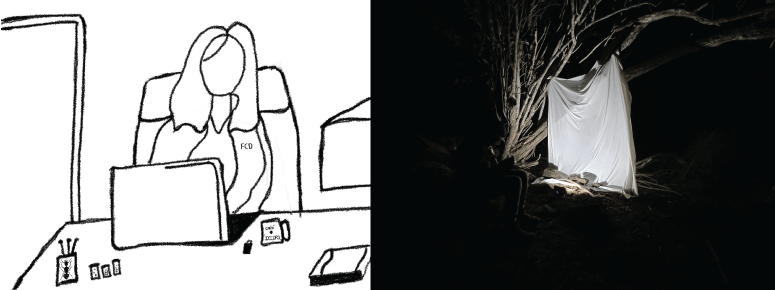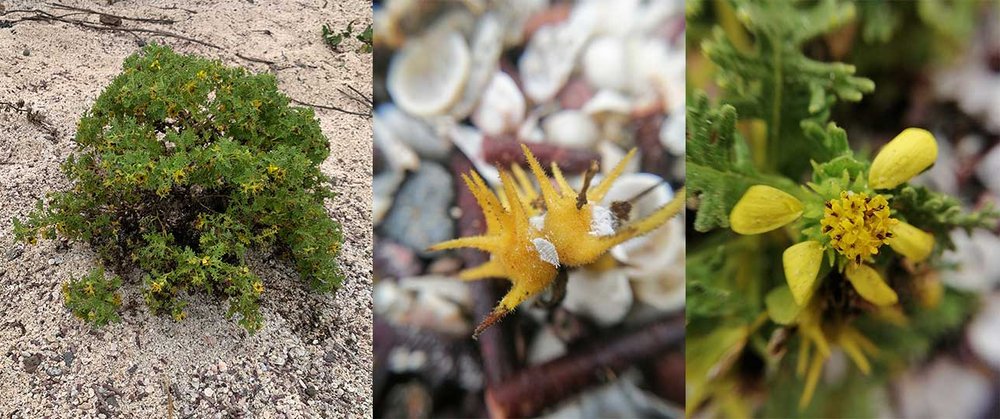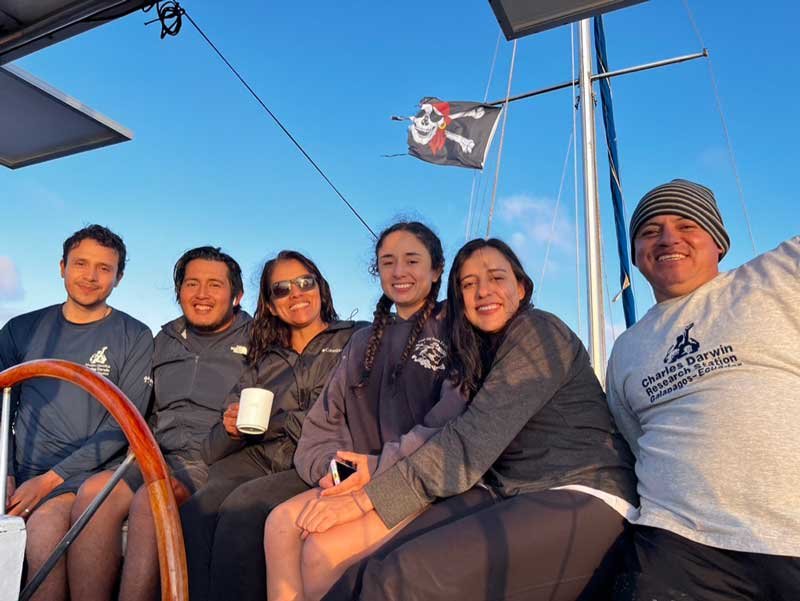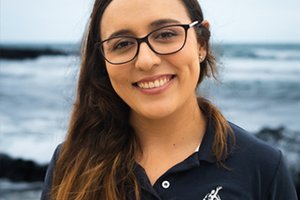What’s the island like? Has anyone else collected insects here? What kind of insects live there? Is there any interaction between endemic plants and insects? These are some of the questions I started asking myself as I prepared a field trip to Española island. The fact is that a researcher’s work starts in their office, with a computer, articles, and a good cup of coffee. I invite you to read this blog where some of those questions will be answered.
As I researched documents ahead of my trip, I found an article about the biochemistry of endemic plants of the Galapagos island which included Lecocarpus lecocarpoides (Adsersen et al., 1988), the plant I was going to study on Española island. It also included some information about the presence of chemical compounds with "anti-herbivore" functions, which can be toxic to certain organisms. If you’ve ever wondered whether plants can communicate with one another or with animals, well, the answer lies in their chemical activity.

During the field trip, we visited Punta Manzanillo and Las Tunas sites. Our expedition had the following objectives: 1) Identify the terrestrial invertebrates present in the study areas and 2) Analyze the ecological interactions between terrestrial invertebrates and the plant species Lecocarpus lecocarpoides.
Española represents a physical challenge for any researcher stepping on the island, especially at Las Tunas, which represents a 45-minute walk at a park ranger's pace over volcanic rocks with different shapes. Once at the study site, I could observe a desolate and dry environment - it was September 2022. Sometimes we had a few drops of rain and sometimes a sunny day. You can’t help but wonder, who can survive here? What can they feed on?

Some clues appeared in the first days of the expedition, when I observed the Galapagos carpenter bee Xylocopa darwini, several individuals of the mantis species Galapagia solitaria, as well as a great variety of spiders and flies, that used dry twigs as camouflage. I found lots of bug wings (elytra) in the trees, live bugs in the trees’ roots, and some ants inside dry branches. This led to more questions: What survival strategies are these different organisms using during the dry season?
After Las Tunas, we walked to Punta Manzanillo point. Here I found valuable information while observing the only adult Lecocarpus lecocarpoides plant at the site. First, this plant can produce an "anti-herbivore" substance. Second, its seeds have scales. Third, there were active ants in the roots and the branches. And finally, I found caterpillar silk in some seeds. This finding is interesting because it generates questions such as: Is this caterpillar from a moth? Is it an endemic species? Is there any close relationship between these species?

Punta Manzanillo is also a challenging site because of the insect traps. The traps, called ‘pitfall traps’, consist of deep cups containing a solution of alcohol, water and a pinch of soap. The Galapagos Mockingbirds are famous for their ability and tenacity to get leftover food. They discovered that the installed traps could also be a good food source, especially those that contained bait. So, I leave this warning for future researchers wishing to conduct their studies there: 'beware of Mockingbirds'…
What did we find in Punta Manzanillo and Las Tunas? What is the identity of the caterpillar found in the seeds? Could the scale be a big problem for our restoration objectives? I am trying to answer these questions and hope to tell you more soon… stay tuned!

Bibliography
- Adsersen, A., Adsersen, H., & Brimer, L. (1988). Cyanogenic constituents in plants from the Galapagos Islands. Biochemical Systematics and Ecology, 16(1), 65-77.
- GV2050 (2022, 12 de octubre). Española. http://www.galapagosverde2050.com/islas/espanola







